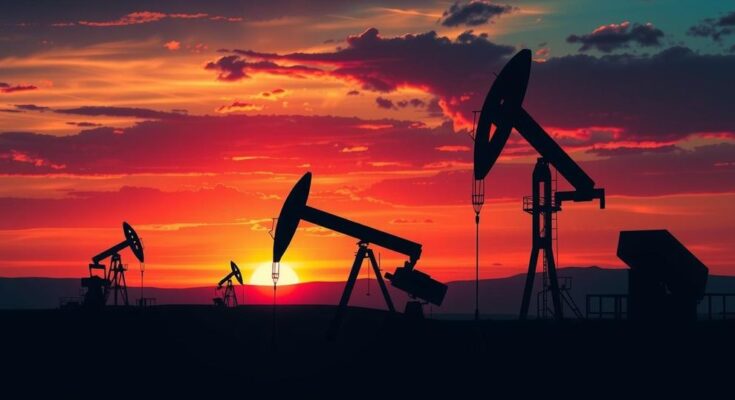President Trump is considering extending Chevron’s sanction waiver for Venezuela after allowing it to lapse earlier this year. This decision follows discussions about imposing tariffs on nations buying Venezuelan oil to limit China’s presence. Chevron’s operations are vital for Venezuela’s economy, exporting significant oil quantities, and its plans for increased production may hinge on Trump’s forthcoming decision.
President Donald Trump is contemplating the extension of Chevron’s sanction waiver for Venezuela. Initially, he allowed this waiver to lapse earlier this year, according to reports from the Wall Street Journal. The potential extension emerged during a meeting between Trump and oil executives at the White House, where discussions included imposing tariffs on countries purchasing Venezuelan oil to limit China’s influence in the region.
Chevron has cautioned that China could fill the void if the company withdraws from Venezuela, appealing to Trump’s concerns regarding China’s expansion. In late February, Trump expressed his intent to reverse the concessions previously made by the Biden administration regarding the oil transaction agreement with Venezuela, emphasizing the unmet electoral conditions by the Maduro regime.
Chevron has been significantly contributing to the Venezuelan economy by exporting approximately 240,000 barrels of crude oil daily to the United States, facilitated by the waiver. This figure represents one-quarter of Venezuela’s total oil production, generating around $6 billion in revenue. The company had plans to enhance exports from the Petropiar operation, potentially increasing output by 50% this year, contingent upon a favorable decision from Trump regarding sanctions and licensing.
The consideration of extending Chevron’s waiver highlights a crucial pivot in U.S. policy regarding Venezuelan oil. As Trump explores ways to counter China’s influence and potentially shore up the Venezuelan economy, the decision could significantly impact Chevron’s operations and the broader geopolitical landscape surrounding oil production in the region.
Original Source: oilprice.com




